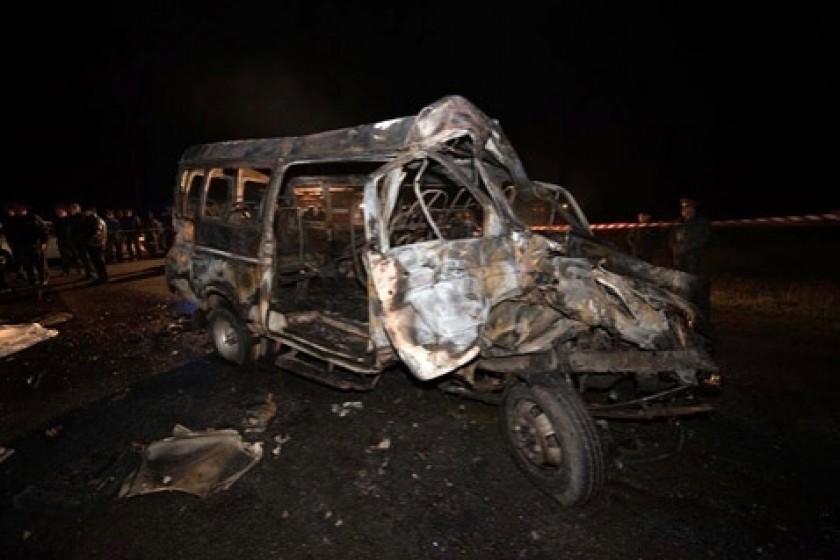
Armenia’s Deadly Road Accidents: Could Monday’s Tragedy Have Been Averted?
The tragic road accident on Monday, November 10, in which a Gazelle microbus hit a truck on the Yerevan-Gyumri highway that claimed the lives of seven, wasn’t a freak occurrence.
Such deadly accidents happen frequently on inter-city Armenian roads.
While lamenting the loss of life, we have to understand why such tragedies occur in the first place.
It’s no secret that Russian vehicle manufacturers pay little attention when it comes to passenger safety. Crash test results on the GAZ-3221 microbus are frightening.
Practically none of the Gazelles plying passengers to and from in Armenia are equipped with ABS (antilock braking system). To make matters worse, these vehicles are modified to carry more passengers than envisaged by the manufacturer. Thus the danger factor precipitously rises.
A new and more expensive model, the GAZ 32211, was launched specifically for inter-city transportation. All seats are equipped with safety belts and, according to the manufacturer, it is a more durable vehicle. As a rule, however, the companies operating commuter routes in Armenia aren’t ready to pay the difference.
Readers might have noticed that such tragic accidents usually occur when the roads are dark. And you’ve probably also have noticed that buses and microbuses are frequently driven with their headlights off. (This is perhaps so that waiting commuters can see the route number affixed)
While driving with the headlights off may not be a factor for inter-city accidents, it certainly is when it comes to city commutes. Automobile drivers often do not see Gazelles until it’s too late.
The problem here is a consequence of traffic laws that do not obligate drivers to turn on their headlights after dark. They are allowed to drive with only their parking lights which are insufficient for night driving.
Frequently, such accidents are caused by the incorrect installation of the natural gas tanks that are commonly used in Armenia. If there’s a gas leak, a sudden spark can cause a fatal explosion and fire.
Accidents have occurred in Yerevan where the culprit has been faulty brakes.
In the past, I have argued that the automobile inspection agency in Armenia exists merely on paper. If proper vehicle inspections were the norm, rather than the exception, you wouldn’t see gas tubes in vulnerable and exposed places, or commuter vehicles with faulty brakes on the road.
While the law in Armenia states that every passenger vehicle must be equipped with a fire extinguisher, you rarely see one in. The automobile inspection agency is responsible for seeing that this law is followed.
About one month ago an Opel passenger car and a cargo truck collided at the same Yerevan-Gyumri intersection, near the village of Hrom, where Monday’s accident occurred.
While it was a bloody incident, the highway police and other relevant agencies failed to reach the proper conclusions regarding the risks posed by that intersection.
If a stop sign had been placed on the secondary road, before it merges with the highway, or conversely, had a speed reduction sign been placed on the highway before the intersection, it is possible that Monday’s deadly accident may have been averted.
Sadly, the loss of seven lives will probably not lead to any road safety review.
Generals, ministers, and provincial governors speed by the same intersection.
Who is going to tell them to slow down?
 Videos
Videos Photos
Photos
Comments (1)
Write a comment